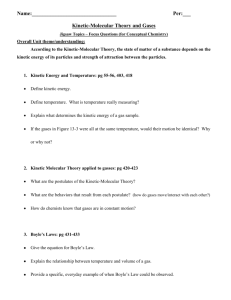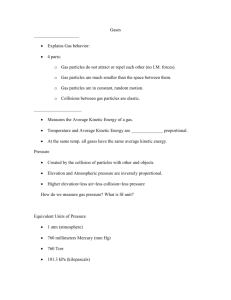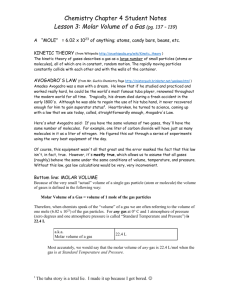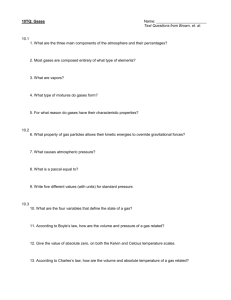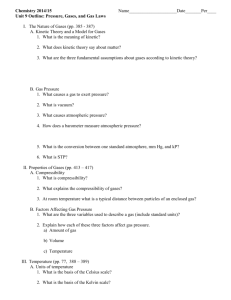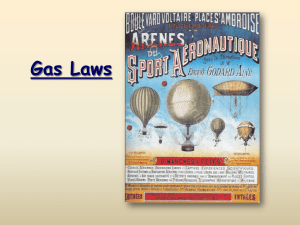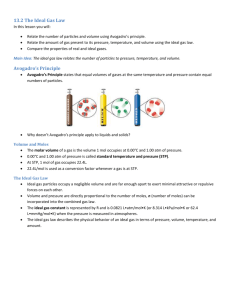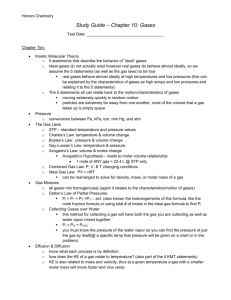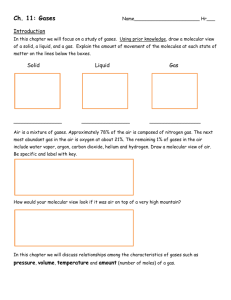Chapter 14 The Gas Laws
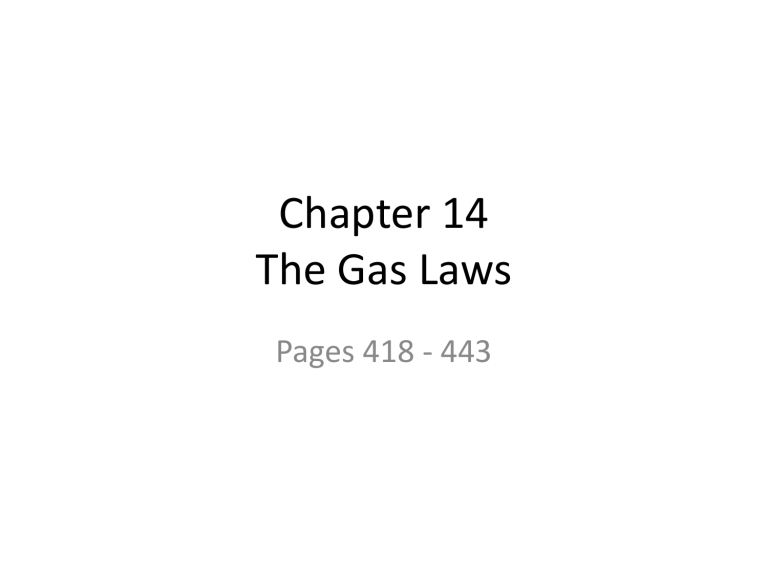
Chapter 14
The Gas Laws
Pages 418 - 443
• The Kinetic molecular theory that we talked about in the last is still valid.
• Gases are in constant random motion.
• Collisions between gas particles are elastic.
• Gases are considered to be point masses.
• The speed of gas particles is directly related to the temperature of the gas.
• Actual gases don’t obey all parts of the Kinetic
Theory.
• Directly related means that it changes the same way.
• Inversely related means that it changes in an opposite manner.
Boyle’s Law
• At a constant temperature, the pressure of a gas and the volume of a gas vary inversely.
• Boyle discovered that the pressure of a gas times its volume was always equal to a constant value at a constant temperature.
•
P
1
V
1
= P
2
V
2
Charles ‘s Law
• At a constant pressure, the volume of a gas and its temperature vary directly.
• Charles discovers that volume divided by temperature is a constant value at a constant pressure.
• To eliminate zero and negative numbers, temperatures must be in Kelvins. ( o C + 273 = K )
• V1 / T1 = V2 / T2
•
Gay – Lussac’s Law
• At a constant volume, pressure and temperature vary directly.
• P1 / T1 = P2 / T2
• Avogadro’s Principle
• At constant temperature and pressure the volume and number of particles of a gas vary directly.
• V1 / n
1
= V2 / n
2
( n = moles)
The Combined Gas Law
• We can put these laws together to create one equation.
•
P1 V1 / n
1
T1 = P2 V2 / n
2
T2
• This one law can be used in place of any of the other laws.
• If a quantity is not give or is said to be constant, it can be dropped out of the equation.
Ideal Gas Law
• We can further simplify the equation if we choose one set of conditions to always be Standard Temperature and Pressure.
• We can then replace the right side of the equation with
R, the ideal gas constant. By rearranging the equation we get the ideal gas equation.
•
P V = n R T
• Where R = 0.0821 L atm / mol K
= 8.31 L kPa / mol K
= 62.4 L mmHg / mol K
Variations of the Ideal Gas Law
• By either rearranging the equation or substituting in other equations, we can change the equation.
• Molar Mass of a gas
P V = m R T / M
Where m is the mass of the gas and M is its molar mass.
• Density of a Gas
D = (m/V) = M P / R T
Real Gases
• As stated previously, real gases do not follow the
Kinetic molecular theory exactly. Because of this
Real gases do not behave exactly like ideal gases.
• The key points that differ are that real gases do have some small volume and that there are some attractive forces between gas particles.
• Under most normal conditions, real gases behave very closely to ideal gases, but under low
temperatures and high pressures these differences become large enough to cause variations in behavior.

